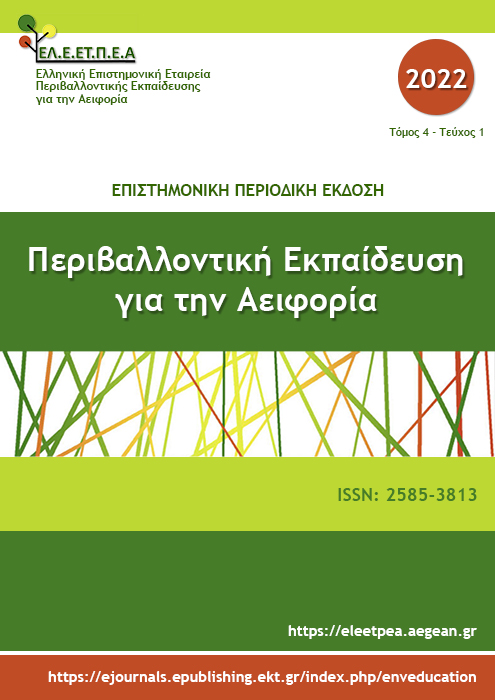Κίνητρα και εμπόδια για μείωση πλαστικού μιας χρήσης στο Πανεπιστήμιο προς έναν αειφορικό μετασχηματισμό του

Περίληψη
Σκοπός της παρούσας μελέτης είναι η διερεύνηση των απόψεων μελών του Πανεπιστημίου Θεσσαλίας σχετικά με δράσεις μείωσης του πλαστικού μιας χρήσης και πιο συγκεκριμένα σχετικά με τη χρήση του ψύκτη αντί για την αγορά πλαστικών μπουκαλιών νερού και τη χρήση επαναχρησιμοποιούμενων ποτηριών αντί για ποτήρια μιας χρήσης. Πραγματοποιήθηκε ποσοτική έρευνα και χρησιμοποιήθηκε το ερωτηματολόγιο για τη συλλογή δεδομένων. Το δείγμα αποτελείται από 1027 άτομα, μέλη της πανεπιστημιούπολης. Τα αποτελέσματα δείχνουν ότι το 62,7% του δείγματος δήλωσε την πρόθεσή του να χρησιμοποιήσει τον ψύκτη αντί να αγοράζει εμφιαλωμένο νερό έχοντας ως ισχυρό κίνητρο την αίσθηση της προσωπικής συμβολής στην προστασία του περιβάλλοντος και ως βασικό εμπόδιο την αμφιβολία για ασφαλή χρήση του ψύκτη. Το 61,6% του δείγματος θα έφερνε ποτήρι από το σπίτι για το ρόφημά του αντί να το αγόραζε σε ένα πλαστικό ποτήρι μιας χρήσης. Το κύριο εμπόδιο φάνηκε ότι ήταν η δυσκολία να κουβαλούν ένα ποτήρι από το σπίτι, ενώ το μεγαλύτερο κίνητρό τους ήταν να υπάρχει στην αγορά ένα εύκολο στη μεταφορά ποτήρι. Τέλος, υπάρχουν κάποιες προτάσεις με βάση τα αποτελέσματα της έρευνας.
Λεπτομέρειες άρθρου
- Πώς να δημιουργήσετε Αναφορές
-
Ηλιοπούλου Ι. (2022). Κίνητρα και εμπόδια για μείωση πλαστικού μιας χρήσης στο Πανεπιστήμιο προς έναν αειφορικό μετασχηματισμό του. Περιβαλλοντική Εκπαίδευση για την Αειφορία, 4(1), 38–49. https://doi.org/10.12681/ees.30113
- Ενότητα
- Articles

Αυτή η εργασία είναι αδειοδοτημένη υπό το CC Αναφορά Δημιουργού – Μη Εμπορική Χρήση – Παρόμοια Διανομή 4.0.
Οι συγγραφείς διατηρούν τα πνευματικά δικαιώματα και παρέχουν στο περιοδικό το δικαίωμα της πρώτης δημοσίευσης μαζί με την αδειοδότηση της εργασίας με CC-BY-NC-SA, που επιτρέπει σε άλλους να μοιράζονται αυτή την εργασία με αναγνώριση του συγγραφικού δικαιώματος και την αρχική δημοσίευση σε αυτό το περιοδικό.

